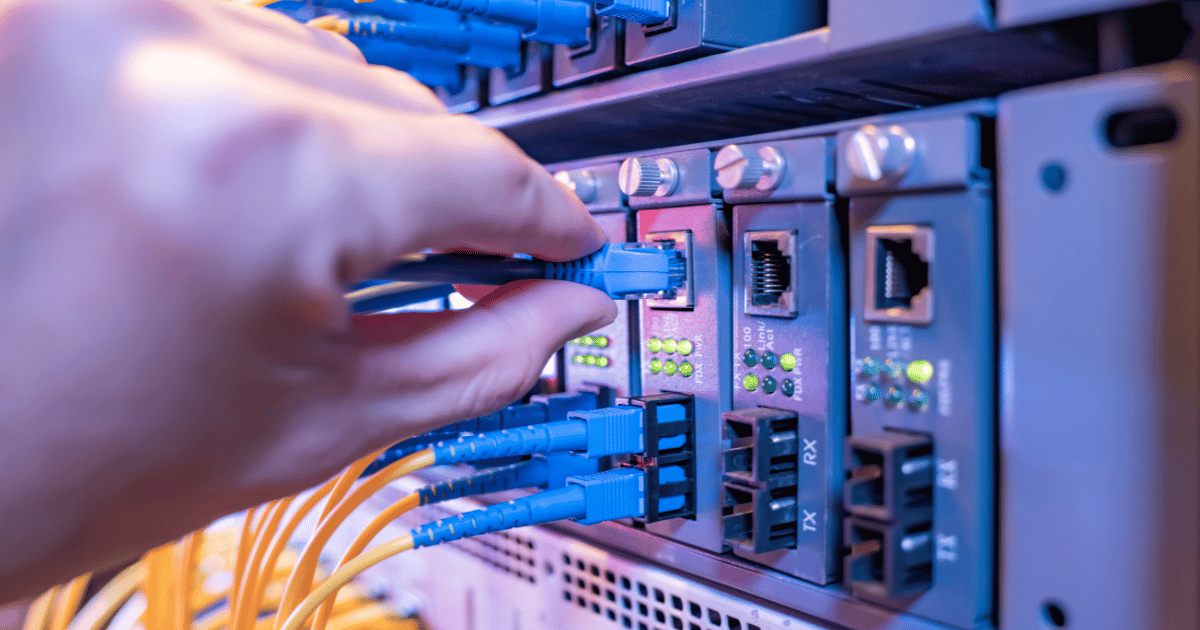Fiber Optic Network vs. Copper Network: A Comparative Analysis

The two primary types of networks that dominate the telecom landscape are fiber optic networks and copper networks. Each has its own set of characteristics, advantages, and limitations.
Fiber Optic Network: Unleashing the Power of Light
Fiber optic networks leverage the transmission of data using light pulses through optical fibers made of glass or plastic. These networks have revolutionized telecommunications by offering high-speed data transmission, low latency, and long-distance connectivity. Fiber optic cables consist of thin strands of glass or plastic, known as optical fibers, which transmit data using light signals.
Advantages of Fiber Optic Networks:
1. High Bandwidth: Fiber optic cables offer significantly higher bandwidth compared to copper cables, enabling faster data transmission speeds and greater capacity for handling large volumes of data.
2. Immunity to Electromagnetic Interference (EMI): Unlike copper cables, fiber optic cables are immune to EMI, making them ideal for environments with high electromagnetic interference, such as industrial facilities or areas with heavy machinery.
3. Longer Transmission Distances: Fiber optic cables can transmit data over much longer distances without signal degradation compared to copper cables, making them suitable for long-haul communication links and intercontinental connectivity.
4.Security: Fiber optic signals are transmitted using light pulses, which are more difficult to intercept compared to electrical signals transmitted over copper cables, providing enhanced security for data transmission.
Applications of Fiber Optic Networks:
1. Telecommunications: Fiber optic networks form the backbone of modern telecommunications infrastructure, facilitating high-speed internet connectivity, voice communication, and video streaming services.
2. Data Centers: Fiber optic connections are commonly used within data centers to interconnect servers, storage systems, and networking equipment, enabling high-speed data transfer and low-latency communication.
3. Cable Television: Fiber optic networks are increasingly being used to deliver cable television services, offering high-definition video quality and a wide range of channels to subscribers.
4. Healthcare: Fiber optic networks play a crucial role in healthcare applications, facilitating high-speed data transfer for medical imaging, telemedicine consultations, and electronic health records management.
.png?width=1200&height=630&name=Blog%20Post%20(1).png)
Copper Network: The Legacy of Traditional Connectivity
Copper networks, on the other hand, rely on electrical signals transmitted through copper cables for data communication. While copper networks have been widely used for decades and continue to be prevalent in many applications, they have limitations compared to fiber optic networks.
Advantages of Copper Networks:
1. Cost-Effectiveness: Copper cables are generally less expensive to install and maintain compared to fiber optic cables, making them a cost-effective option for short-distance communication links and local area networks (LANs).
2. Compatibility: Many existing infrastructure and devices are designed to work with copper networks, making them a convenient choice for retrofitting or upgrading legacy systems without the need for extensive modifications.
3. Flexibility: Copper cables are more flexible and easier to install in tight spaces compared to fiber optic cables, making them suitable for indoor applications and situations where space is limited.
Limitations of Copper Networks:
1. Limited Bandwidth: Copper cables have lower bandwidth compared to fiber optic cables, limiting their ability to support high-speed data transmission over long distances or for demanding applications such as video streaming or cloud computing.
2. Susceptibility to Interference: Copper cables are vulnerable to electromagnetic interference (EMI) and radio frequency interference (RFI), which can degrade signal quality and lead to data transmission errors.
3. Signal Degradation: Copper cables experience signal attenuation over distance, resulting in reduced signal strength and slower data transmission speeds over long cable runs.
Applications of Copper Networks:
1. Local Area Networks (LANs): Copper networks are commonly used for building or campus LANs, where the distance between network devices is relatively short, and cost-effectiveness is a primary consideration.
2. Telephone Lines: Traditional telephone networks rely on copper cables for voice communication, although many providers are transitioning to digital or VoIP (Voice over Internet Protocol) technologies.
3. Residential Broadband: Copper-based DSL (Digital Subscriber Line) connections are used to deliver broadband internet access to residential subscribers in areas where fiber optic infrastructure is not available.
In conclusion, both fiber optic networks and copper networks play important roles in modern communication infrastructure, each offering unique advantages and applications. Fiber optic networks excel in providing high-speed, long-distance connectivity, while copper networks remain cost-effective and versatile for local and legacy applications. As technology continues to evolve, the choice between fiber optic and copper networks will depend on factors such as performance requirements, budget constraints, and existing infrastructure.
With the rapid expansion of digital connectivity and the growing demand for high-speed data transmission, fiber optic networks are poised to become the predominant choice for next-generation communication infrastructure, offering unparalleled speed, reliability, and scalability in an increasingly connected world.


